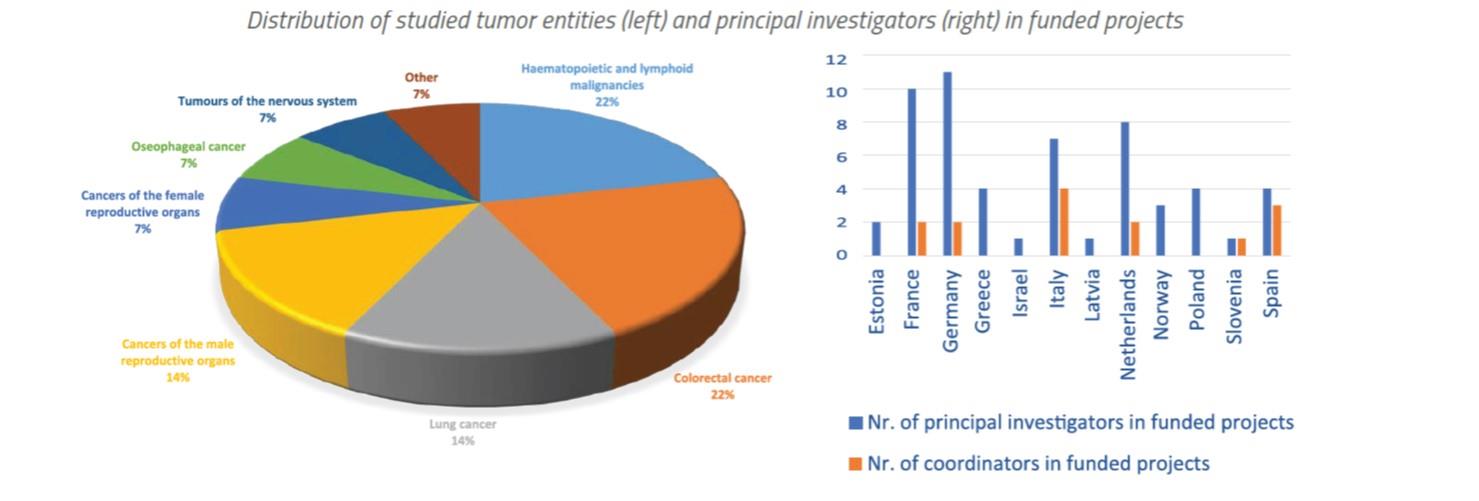Introduction
The 2016 Joint transnational call on “Minimally and non-invasive methods for early detection and/or progression of cancer” primarily aimed to fund studies on risk stratification to distinguish groups by susceptibility for development or progression of cancer based on molecular biomarkers and established cancer risk factors, such as age, medical history, anthropometrics (e.g., body mass index, waist circumference), and lifestyle related determinants (e.g., diet, physical exercise, environmental exposure and medication).
The second aim was validation of multiparametric methods, using the combination of promising biomarkers (genomic, proteomic, metabolomic and imaging markers) to improve our capability for early detection or progression of cancer. The final aim was the improvement of clinical evidence of the minimally invasive methods.
The call was motivated by the notion that screening of the general population, risk stratification, surveillance of high risk groups and diagnosis represent different steps of a multimodal approach of early cancer detection. This approach greatly increases the chances for successful treatment as generally prognosis worsens with advancing stage.
Minimally invasive methods, such as the identification of specific biomarkers in body fluids or innovative imaging approaches at early stages of cancer may help to detect the disease before any clinical manifestation, with a better chance to provide therapies with a curative intent. However, there is a certain risk of over-diagnosis and over-treatment.
Despite major achievements in the understanding of the molecular roots of cancer, validation at the general population level of minimally invasive methods for early detection and prediction of cancer progression remains a poorly explored area. So far, the interest of the pharmaceutical industry has been strongly focused on areas requiring immediate and effective solutions, i.e., the metastatic setting. This effort is currently in parallel with actions leading to implementation of early detection strategies in groups of people with high risk of cancer and adaptation of treatment strategies according to the risk of progression for patients diagnosed at an early stage of cancer. These actions are particularly attractive
at an academic institution level in light of their potential impact on cancer incidence and mortality.
The call launched in December 2016 by 23 organisations from 16 countries; 110 proposals submitted involving 543 research groups; 14 funded projects involving 70 research groups; 15,2 Mio € committed.
